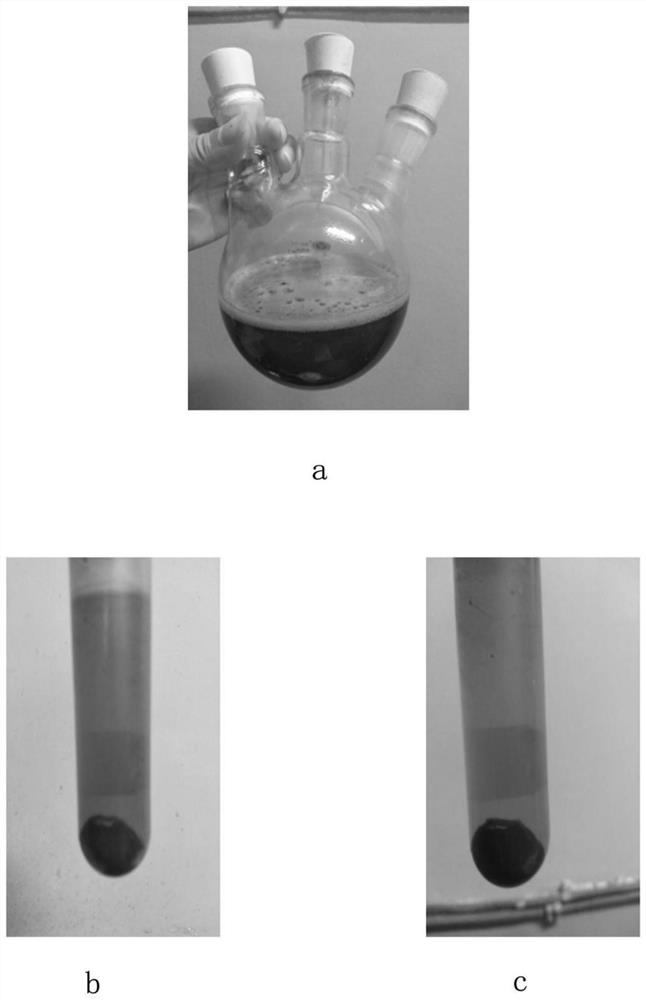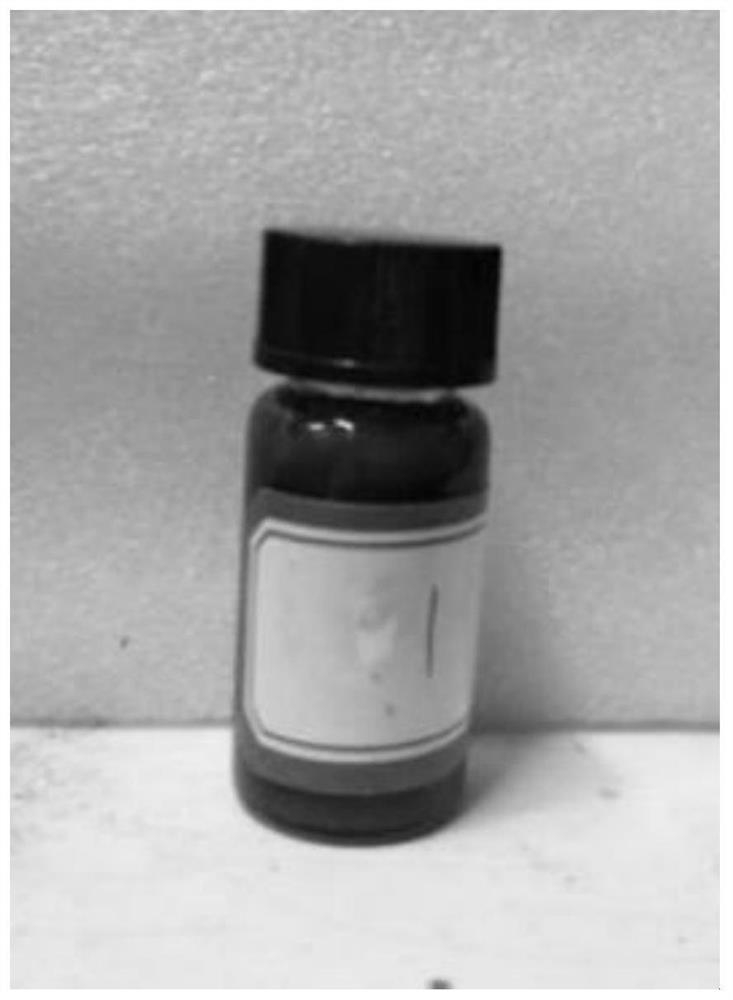A preparation method of polyaniline-coated silver-loaded nano-microcrystalline cellulose-based conductive ink
A nano-microcrystalline, cellulose-based technology, applied in inks, household utensils, applications, etc., can solve the problems of easy cracking of nano-silver, and achieve the effect of improving process and formula, improving adhesion, and improving dispersibility
- Summary
- Abstract
- Description
- Claims
- Application Information
AI Technical Summary
Problems solved by technology
Method used
Image
Examples
Embodiment 1
[0046] Example 1: A method of preparing a polyaniline wrapped silver nano-microcrystalline cellulose base conductive ink, method principle figure 1 The show is performed as follows:
[0047] A, 48 ml of concentration of 0.3% nano-microcrystalline cellulose solution is ultrasonic to obtain a nano-microcrystalline cellulose suspension solution; the nano-microcrystalline cellulose suspension solution is added to the solution of a concentration of 0.1% nitrate solution, ultrasonic dispersion Stir in 5 minutes to mix evenly;
[0048] B. The mixture is slowly added to the mixed liquid, the sodium borohydride solution is slowly added, stirred for 5 minutes, using an electric agitator to mix uniform, to obtain a silver nano microcrystalline cellulose mixture; then at a speed of 10,000 rpm When centrifugation was 10 min, the obtained precipitate was added to deionized water for 30 min washing, repeating the above process multiple times until the upper cleaner figure 2 The white, then takin...
Embodiment 2
[0052] Example 2: A method for preparing polyaniline wrapped silver nano-microcrystalline cellulosic conductive ink, and performed as follows:
[0053] A, 58 ml of concentration of 0.5% nano-microcrystalline cellulose solution is ultrasonic to obtain a nano-microcrystalline cellulose suspension solution; the nano-microcrystalline cellulose suspension solution is added to silver nitrate solution, ultrasonic dispersion Stir in 5 minutes to mix evenly;
[0054] B. Slowly adding a 25 ml concentration of 0.1% a sodium borohydride solution to the mixture, stirred for 5 minutes, and mixed with an electric agitator to mix, obtain a silver nanocrystalline cellulose mixture; again at 10,000 rpm Under the centrifugation of 10 min, the obtained precipitate was added to deionized water for 30 min washing, and the above process was repeated, and the upper tank was repeated, and then the washed precipitate obtained the silver nanocrystalline cellulose base conductive particles;
[0055] C. Furth...
Embodiment 3
[0058] Example 3: A method of preparing a polyaniline wrapped silver nanocrystalline cellulose base conductive ink, and performed as follows:
[0059] A, 50 ml of concentration of 0.4% nano-microcrystalline cellulose solution is ultrasonic to obtain a nano-microcrystalline cellulose suspension solution; the nano-microcrystalline cellulose suspension solution is added to a silver nitrate solution of 0.15%, ultrasonic dispersion. Stir in 5 minutes to mix evenly;
[0060] B. Slowly adding 25 ml of a concentration of 0.08% a sodium borohydride solution to the mixture, stirred for 5 minutes, using an electric agitator to mix well, to obtain a silver nanocrystalline cellulose mixture; again at 10,000 rpm Under the centrifugation of 10 min, the obtained precipitate was added to deionized water for 30 min washing, and the above process was repeated, and the upper tank was repeated, and then the washed precipitate obtained the silver nanocrystalline cellulose base conductive particles;
[...
PUM
 Login to View More
Login to View More Abstract
Description
Claims
Application Information
 Login to View More
Login to View More - R&D
- Intellectual Property
- Life Sciences
- Materials
- Tech Scout
- Unparalleled Data Quality
- Higher Quality Content
- 60% Fewer Hallucinations
Browse by: Latest US Patents, China's latest patents, Technical Efficacy Thesaurus, Application Domain, Technology Topic, Popular Technical Reports.
© 2025 PatSnap. All rights reserved.Legal|Privacy policy|Modern Slavery Act Transparency Statement|Sitemap|About US| Contact US: help@patsnap.com



